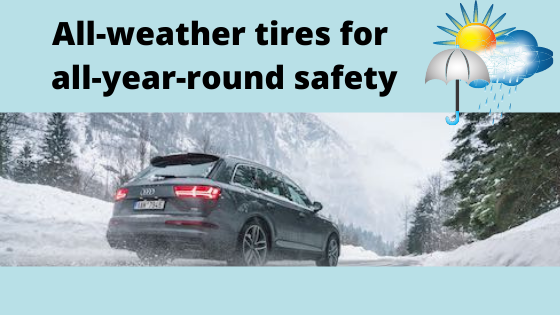When you drive during the winter season, it is already understood that you will need to have winter tires on your vehicle. Winter and snow tires provide you with the safety you need to be able to drive in winter conditions. During the winter, it is mandatory to have winter tires, except in Norway, where it is up to the driver to ensure that they have sufficient grip during each season. So if you have winter conditions, you basically need to have a winter tire.
The dates that are indicated are the period where you obligatory to use winter tires, but most likely, you will need to have them even earlier. For studded tires, there is the earliest date when they can be mounted before the winter and the latest date when they can be mounted after the winter. For the non-studded tires, there are no date limitations on how early you can mount them or how late you can wait until they are removed. They should, however, be removed during the all-season season, as they wear much too fast during the all-seasons and do not provide the best grip on wet surfaces or adequate hydroplaning prevention.
Depending on which area that you live in, the choice of studded or non-studded tends to be based on that. Coastal areas tend to see more icy roads, so their studded tires might be the best option, as they do provide the best grip. If you live in areas with main snow and limited ice, both tire options are good. On snow, it is mainly the tread pattern that determines the grip and driving properties. So if you select a good quality tire, you should be able to have really good driving properties while driving on snow.
Slush is a condition that can be very tricky to drive in. In a similar way that water on a road surface can cause hydroplaning, the slush can cause a similar problem called slushplaning, where the tire isn’t able to push away the thick slush. If this happens, you will lose control of the vehicle. Good tread depth and low speed are beneficial in preventing it. As slush can be very tricky, as it can get very thick, it is always important to be extra cautious.
As always, make sure that the tires are in good condition, free from cuts and cracks. You also need to check the tire pressure on a regular basis. The pressure decreases with decreasing temperature. So if you had checked the pressure before the temperature dropped below zero, you would need to check it again. Low tire pressure reduces the performance, and it also increases the rolling resistance. High rolling resistance increases fuel consumption and tire wear, so you are wasting money on something that can quickly be fixed and should thus be checked regularly.
With all this in mind, you should be able to drive safely during the winter season.
For more information regarding winter tires, visit: https://www.nokiantires.com/
